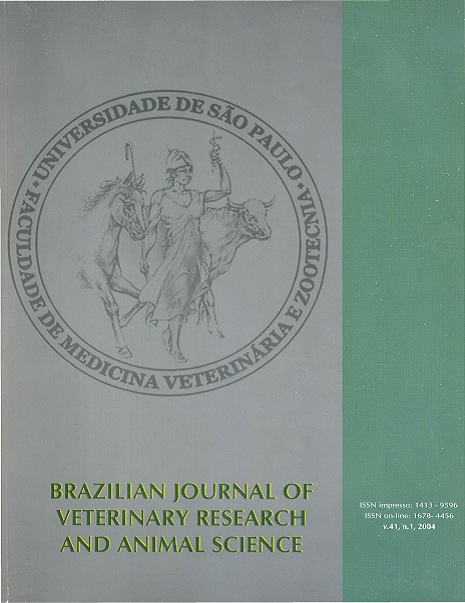This article has no title in english
DOI:
https://doi.org/10.1590/S1413-95962004000100006Keywords:
In vitro fertilization, Sex ratio, Glucose, Percoll gradient, Swim-upAbstract
In the bovine IVP system, it has been obtained a high percentage of male embryos. This experiment was carried ou to determine if the glucose presence in the culture medium affects the sex ratio of bovine embryos IVP from the IVF with spermatozoa prepared for the swim-up (S) or Percoll gradient (P) methods. After the IVM, the COCs had been divided in two groups and inseminated with spermatozoa prepared for one of the methods. The zygotes had been cultivated in medium with or without 5.56mM of glucose, totalizing 4 treatments: S-Glu, S+Glu, P-Glu and P+Glu, and 48h post-insemination, the embryos of each treatment had been sexed for the PCR method (n=845). The effect of glucose in the culture medium on sex ratio of embryos IVP from the two methods was similar (c² test), resulting in a percentage of males lower than 50% in the 2-C stage (S: 30.8%; P: 23.8%: P<0.01) and higher than 50% in the 8-C stage (S: 79.4%; P: 68.8%: P<0.01). These percentages were different (P<0.05) of the observed when the embryos were cultivated without glucose, as much in the 2-C stage (S: 48.5%; P: 41.5%) as in the 8-C stage (S: 62.5%; P: 50.8%). The glucose presence did not affect the sex ratio in the total of produced embryos (S: 56.7%; P: 49.0%), that was similar to the observed in the glucose absence (S: 55.7%; P: 46.2%). Therefore, the glucose exacerbated the difference in the development speed between the female and male embryos.Downloads
Downloads
Published
2004-02-01
Issue
Section
UNDEFINIED
License
The journal content is authorized under the Creative Commons BY-NC-SA license (summary of the license: https://
How to Cite
1.
Rheingantz MGT, Pegoraro LMC, Dellagostin OA, Pimentel AM, Bernardi ML, Deschamps JC. This article has no title in english. Braz. J. Vet. Res. Anim. Sci. [Internet]. 2004 Feb. 1 [cited 2025 Apr. 9];41(1):32-9. Available from: https://revistas.usp.br/bjvras/article/view/6255





